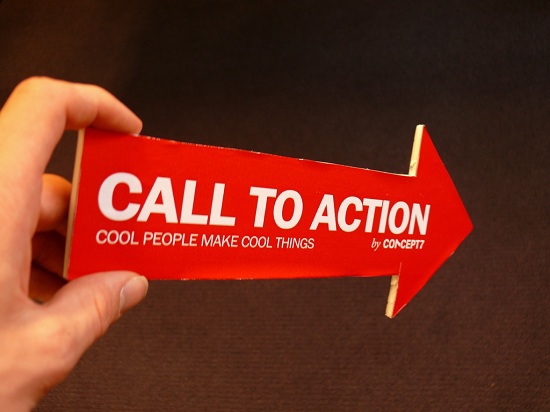Why are the call to action buttons on the right clicked more often?

How you position your call-to-action buttons can affect whether users click on them or not. Many interface designers concentrate only on how their buttons look. But you should also think about where they are located. This is important because the user views your homepage in a very specific way . The main part of it is a large area in the middle, which the user sees first of all when he comes to your website. It is more important than the top of the main page and contains a call to action button (CTA). If you position these buttons in a zone that users view last, your visitors will click on them more often .
Gutenberg Chart: “End Zone”
In the main part of the main page are most often found:
- product image;
- title;
- explanatory text;
- call to action buttons.
Users look at your headline, explanatory text and image to learn something about your product. However, after they learn something, they will have to see the CTA buttons to do something. If you place these buttons in the “end zone”, it will be easier and easier for the user to click on them, because they will be in the area where the view ends.
')
The end zone is located at the very bottom, to the right of the main part of your main page. This can be seen from the chart by Gutenberg (Edmund C. Arnold's time-tested concept). It is usually used to optimize the appearance of an interface, which may contain a limited number of elements. It divides your screen into 4 zones :
- the area of the primary visual focus is in the upper left part;
- the most explored area is at the top right;
- the least studied area is from the bottom left;
- and the end zone is at the bottom right.
Naturally, the user's gaze begins to move from the primary focus zone and moves down the screen from left to right and from top to bottom to the end zone.

The button in the end zone is a very compelling call to action, because it is located in the area where the page viewing process ends. When it is there, visitors do not need to look around again to find the CTA block. If you place such a button in any other zone, users, of course, will click on it, but not as often as if it were located in the end zone.
CTA buttons left and right
Often in the main part of the main page of many sites, the call-to-action buttons are located on the bottom left. This is the least explored area that the user pays the least attention to. A person can run his eyes on your CTA button, but will not want to linger on it for long . When he finishes viewing and finds himself in the final zone, he must return to the least studied zone to click on the button. This forces him to move his gaze again, and returning to the least explored area is in itself an unnatural movement that goes against the user pattern of viewing the page. The call-to-action buttons must be in the end zone, because they are the last thing the user needs to see before performing the action that is targeted for you.

Here, the call-to-action buttons are located in the least studied area.
In the example below, the elements of the main part of the main page are ideally located:
- The heading, which the user reads first, is in the zone of the primary visual focus, where the person looks first.
- Explanatory text that the user reads after the title is located in the most explored area, where the reader looks after.
- The image of the product, which the user looks after reading, is in the least studied area. This is the most advantageous place for a similar element, because our view is longer fixed on the images, and by placing them in the least explored area, we guarantee that the user will not study the photo too long compared to the attention that he pays to other elements of the page ( to make a truly effective page, pay attention to how landing experts criticize, and correct your product in a timely manner).
Located in the final zone, the CTA buttons help the user to perform the desired action faster and easier.

Here, the call-to-action buttons are in the end zone.
It may seem to you that the difference between the CTA buttons, located on the left and right, is only in place on the page. But if you dig a little deeper, it turns out that the location of the CTA buttons affects whether users click on them or not. Such knowledge will help you promote your product and show it in the best light. This will encourage users to act!
Aida Legrand (CTO Witget) about placing a button in the lower right area of the screen in order to increase the number of “clicking” users:
Yes, this is a really important element. That is why we use this technique on our website (in particular, witt with a snowman), and also recommend it to our customers. One of the most recent examples in our practice is a website with promotional codes. Its owner contacted us because the conversion for one of the offers (Aliexpress) was disappointingly low. Among our recommendations was the placement in the lower right corner of the pop-up informer. It depicts a girl, in whose hands is a sign with a message about the discount.

Source: https://habr.com/ru/post/375345/
All Articles